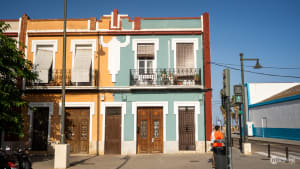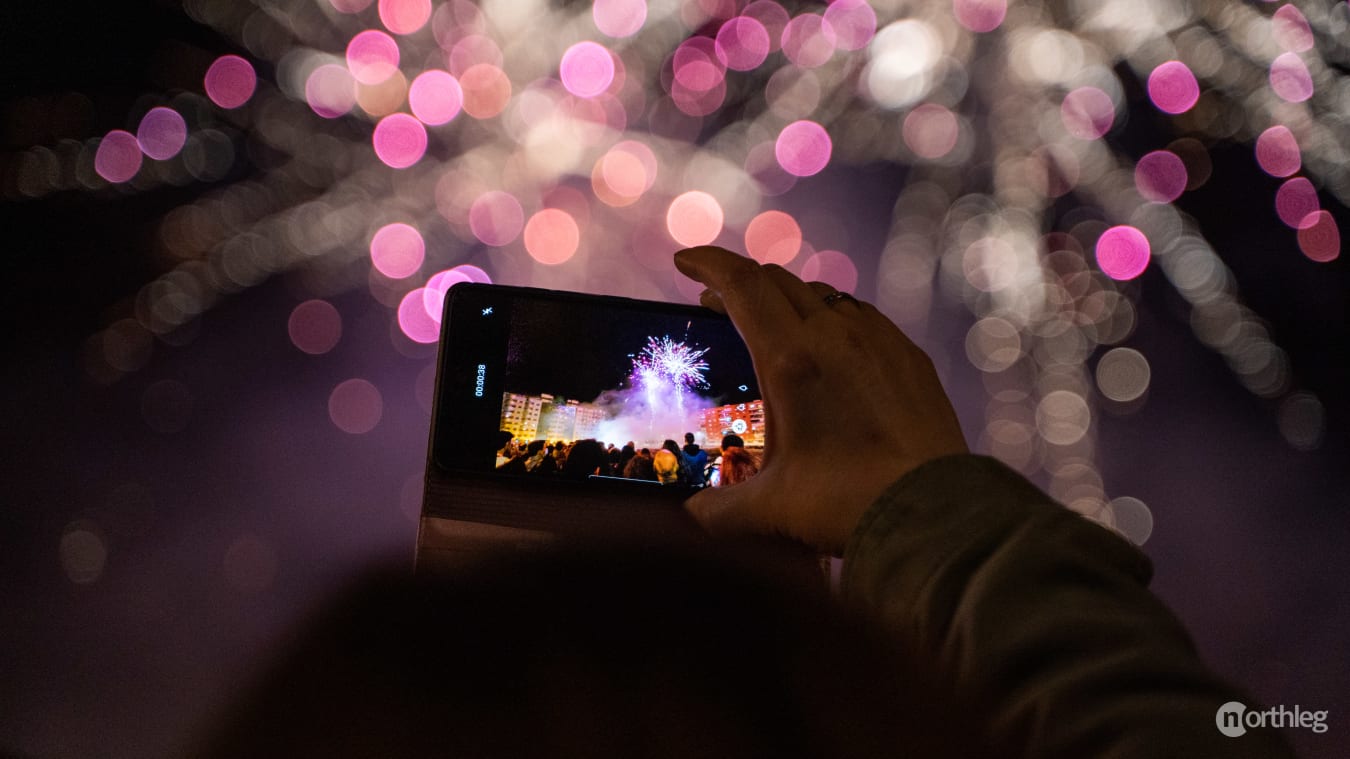
Nit del Foc
The final grand firework display before the last day of Fallas. Twenty minutes of dancing colours and lights exploding in the dark Valencian sky
Nit del Foc in a nutshell…
The Nit del Foc is Fallas’ grandest firework display, illuminating the night sky before the festival’s final day. This 20-minute spectacle features an explosive crescendo of light, sound, and colour, making it one of the most anticipated events of Fallas.
Location: Turia Park, between Puente de la Exposición and Puente de las Flores.
Time: 1:30 AM on March 19th (late night of March 18th).
Entry: Free, but massive crowds gather early. Secure your spot in advance.
Best viewing spots: Puente del Real, Puente de Aragón, Plaza de América, and Plaza Zaragoza.
Transport: Metro stops near the venue (Alameda) close early; buses are rerouted, so plan to walk or take alternative routes.
The Nit del Foc, literally meaning Night of Fire, is the biggest and longest firework display of Fallas. Its aim is to kick off the last day of the festival by making as much noise and setting off as many fireworks as possible.
This firework show can be considered the concluding display of all the Castillos de Fuegos that light up the Valencian night sky during Fallas. Undoubtedly, it is the most impressive. The display usually lasts just over 20 minutes and in recent years, anywhere from about 2 to 4.5 tonnes of gunpowder have been used in it.
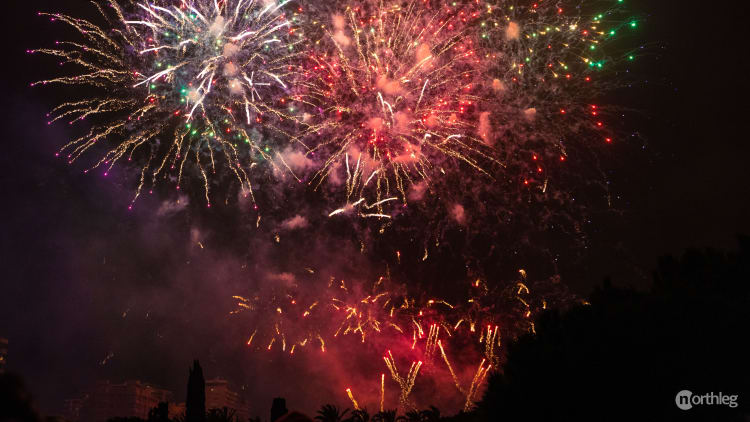
Given the local passion for everything that involves fireworks and is loud, it’s no wonder that the event is highly awaited by all Valencians. In fact, this is one of the key occurrences in the days leading up to the Cremà and it draws massive crowds.
The Program
The Nit del Foc program is always different and innovative, and it is generally assigned to a different pyrotechnic company every year. However, it follows a ritual flow that has remained the same over many years.
Different stages punctuate this structure. The beginning is usually softer and more delicate. Then comes a crescendo of noise and light, with astonishing colourful light spikes, multidirectional geometric figures, twirling visual effects, soft golden fountains, and of course rhythmic firecrackers. The display usually ends with a dynamic explosion of sound and colour that lasts a few minutes.
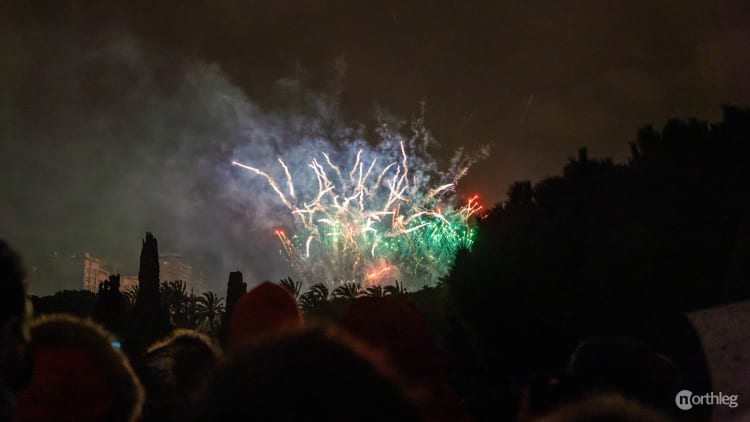
The show usually takes several days and quite a few experts to plan. Setting it up is no joke either, as it can take dozens of hours. The technological improvements allow for thousands of precise explosions to be computer-controlled and timed, reaching as high as 60 metres in the air.
History
Like many of the other Fallas events, the Nit del Foc has undergone various changes and it only started taking its current form in the last decades of the 20th century.
1932 - First Nit del Foc
At this point the Nit del Foc was celebrated as part of the Semana Fallera and it resembled a nighttime Mascletà (made up mostly of firecrackers and not as many fireworks and lights).
1942 - Castillo de Fuegos
The display takes the form of a proper Castillo de Fuegos Artificiales - an elaborate firework display - and not just a Mascletà Nocturna.
1944 - Written mention
An article documents that the Nit del Foc, which took place on the 16th of March (as was customary at the time), was organised by Vicente Caballer. The document mentions that the display was so grand that it was expected to break some glass windows in the city.
1987 - Celebration on the current date
It was only in ‘87 that the Nit del Foc started being celebrated on the same day as it currently does: the night between the 18th and the 19th. Back then, the display was still not as complex as it is nowadays, thanks to the advancements of technology.
Practical Info
The Nit del Foc is normally held at night between the 18th and the 19th of March. The fireworks are set off from the 9th tramo (section) of the Turia Park.
| Event |
|---|
| Nit del Foc |
You can see the location on the map here.
Restricted Areas
Of course, access to the 9th tramo of the park (and the adjacent bridges) is forbidden at the time of the event for safety reasons.
To be specific, the closed off bridges for the occasion are: Puente de la Exposición, Puente de las Flores, Puente del Mar.
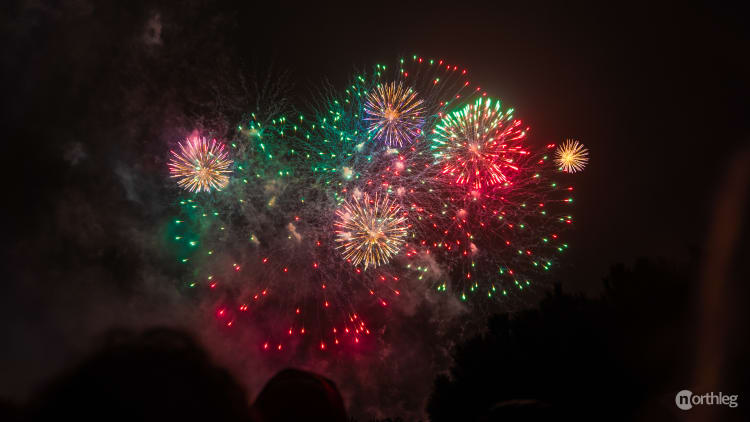
In terms of streets, the whole Passeig de Ciutadella and the stretch of the Alameda between Puente de la Exposición and Puente del Mar are off-limits. Additionally, Puente del Real and Puente de Aragón are also closed off for vehicles.
In any case, we recommend you get there on foot or by public transport.
Best Spots to Watch the Fireworks Display
The fireworks are therefore best enjoyed from the nearby bridges or the sides of the park. This means Puente del Real and the Puente de Aragón offer an excellent view - there will be no cars allowed on them so you can safely occupy the bridges.
You can also go to either end of Puente de Aragón (with Plaza de América and Plaza Zaragoza). Other viable options are the area surrounding the kiosk La Pérgola on the Alameda or even Calle de l’Arquitecte Mora and its surroundings.
Our recommendations
When choosing a spot to watch the Nit de Foc, always make sure that your view is not impeded by trees or urban architecture.
Try to go early, as many people are already starting to find a spot at least half an hour before the start of the display.
Transportation
The special safety measures that are put in place during the Nit de Foc also affect public transport.
This means that the Alameda metro stop is closed two hours before the display, around 11:30 pm. A lot of EMT bus lines are also diverted, so the best is to ask the driver what the closest stop is.
| Method |
|---|
| Line |
| Stops |
Frequently Asked Questions
Here you can find quick answers to all of your questions. Linked, you’ll find the articles or the sections of the articles that can give you more detailed information.
-
Nit del Foc, literally meaning Night of Fire, is the biggest and longest firework display of Fallas.
-
The Nit del Foc is normally held at night between the 18th and the 19th of March at 1:30 am.
If you’d like to know more practical information about the event, check out the relevant section of this article.
-
The fireworks are set off from the Turia Park between Puente de la Exposición and Puente de las Flores.
If you’d like to know more practical information about the event, check out the relevant section of this article.
-
Some of the best spots to watch the Nit del Foc are Puente del Real and Puente de Aragón.
If you’d like to know more places where you can see the display, check out the relevant section of this article.
-
Of course, the earlier you get there, the easier it will be to ensure you get a good spot. People generally start arriving half an hour before the scheduled start, so try to get there at least by 1:00 am.
-
The Nit del Foc display usually lasts around 20 minutes.
If you’d like to know more practical information about the event, check out the relevant section of this article.
-
Not really. The Nit del Foc’s display is much bigger and longer than a Mascletà Nocturna, and much more focused on the visual effects than the sound ones.
If you want to know more about the display, you can check out the relevant section of this article.
-
Yes, it is the last one of every Fallas edition. However, while other Castillos de Fuegos Artificiales take place around midnight, this one is scheduled for later, at 1:30 am.







